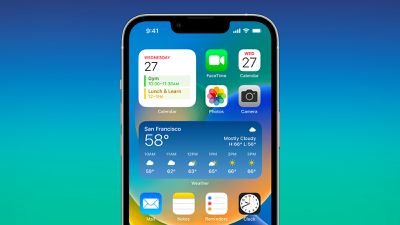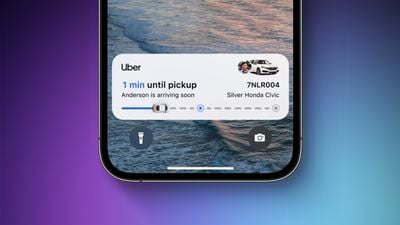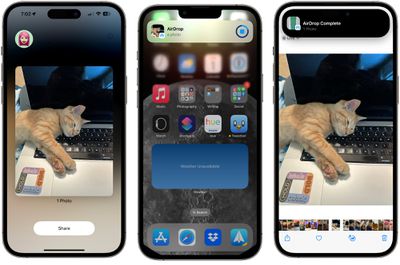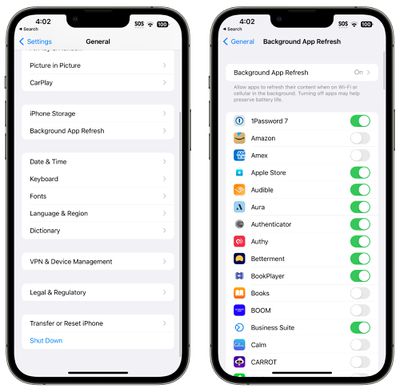When Apple releases new iPhones and new operating system updates, there are often complaints about how long the battery lasts. Apple made improvements to battery life across the iPhone 16 lineup, and while these iPhones last longer than ever, some people are still seeing battery issues.

Battery life problems can be caused by new features Apple has added or bugs that have yet to be addressed. Whatever the cause, we’ve created a list of suggestions for maximizing your iPhone’s battery life. There aren’t many battery saving options that don’t disable key features on the iPhone, but in situations where every minute counts, it’s useful to have options.
You’ll need to balance battery drain with the feature set you want enabled, turning things on and off when you need to ensure your battery lasts all day. Not all of these tips are specific to iOS 18 and the iPhone 16 models, but they will help you preserve battery whether you have an iPhone 16 or an older device.
1. Turn Off iPhone Mirroring
iPhone Mirroring allows you to control your iPhone from your Mac, and get your iPhone notifications on your Mac’s display. Since it’s on Mac, it seems like it shouldn’t be using iPhone battery, but there is a connection there to relay notifications. Notifications still show up when the iPhone Mirroring app is closed on the Mac, so that constant connection might impact battery.


One reader experiencing battery life issues on the MacRumors forums said turning off iPhone Mirroring made a notable difference. If you’re not often using this option, it’s worth turning it off.
To disable it, go to Settings > General > AirPlay and Continuity and tap on Edit. From there, delete the Macs that your iPhone connects to. You can also swipe to delete a Mac from the list.
In iOS 18, Apple made it so you can place app icons and widgets anywhere on the iPhone’s hidden grid, so you might be using widgets more often than before. If that’s the case, it’s worth noting that widgets can have an impact on battery life.


If you’re not using a particular widget on your Home Screen or Lock Screen regularly, it might be best to remove it to preserve battery life. On the Home Screen, you can long press and tap the “-” button to remove a widget.
On the Lock Screen, you can actually set up several different Lock Screen options, so you could create one that has widgets and one that doesn’t, using the latter when you’re low on battery. To add or edit Lock Screens, long press on the Lock Screen and choose either the “Customize” or the “+” button.
On the MacRumors forums, one user said turning off Lock Screen widgets dropped overnight battery usage from 20 percent to 10 percent.
3. Use Dark Mode and Dark Mode Icons
Turning on Dark Mode has long been a suggested way to preserve battery life, because OLED displays draw less power when displaying darker colored pixels. A 2021 Purdue study found that using Dark Mode on a sunny day outside can save you up 47 percent battery power, which can make a major difference.
![]()
![]()
Lower levels of brightness in Light Mode use the same battery as higher levels of brightness in Dark Mode, which explains why Dark Mode can save battery even when screen brightness is turned up. When your screen brightness is lower, such as when you’re in a dim room, swapping to Dark Mode doesn’t save as much battery life, but it still draws a little less power.
In iOS 18, you can set a Dark option for your icons that turns them darker when Dark Mode is enabled (or all the time, if you prefer). Dark icons are easier on the eyes when Dark Mode is on, and it might save just a little extra battery life.
4. Be Mindful of Control Center Controls
iOS 18 has a customizable Control Center where you can use the Controls Gallery to choose your controls, including third-party controls. You can change the size of Control Center toggles, and use multiple pages.
![]()
![]()
Some Control Center toggles are animated, and animations can have an effect on battery life. It’s probably not a major impact, but worth knowing about. One of the bigger offenders is the full-size Music Control Center toggle, which shows album art and has playback controls.
Home app controls also need to update whenever the Control Center updates, and these controls that refresh might drain some battery.
Customize Control Center by long pressing on the display and tapping the “-” button by any controls you want to remove.
5. Remove Your Lock Screen Controls
In iOS 18, you can finally swap out or remove the Camera and Flashlight buttons on the iPhone. If you’ve ever accidentally activated one of those buttons while your iPhone’s in your pocket, you know that leaving on the Flashlight or the Camera for an extended period can definitely impact battery life.


If you’re prone to hitting those buttons, it’s worth removing them. You can do so by long pressing on the Lock Screen, tapping on Customize, and then tapping the “-” button next to the icons.
If you have an iPhone 16 Pro or another “Pro” iPhone that supports a 120Hz ProMotion refresh rate, turning it down to 60Hz might extend your battery life. Since Low Power Mode limits the display refresh rate to 60Hz, it’s definitely a measure that works to preserve battery.


Turning on Low Power Mode is one way to disable ProMotion, but there’s a more permanent Accessibility setting. Open the Settings app, go to Accessibility, tap on Motion, and then toggle on “Limit Frame Rate.”
7. Disable Live Activities
Live Activities let apps keep an ongoing notification on the Lock Screen or Dynamic Island. Combined with the Always-On display of the iPhone 14 Pro, 15 Pro, and 16 Pro, Live Activities can drain your battery.


Live Activities can be turned off by following these steps:
- Open up the Settings app.
- Go to Face ID & Passcode.
- Enter your passcode to unlock the iPhone.
- Scroll down and toggle off Live Activities.
This will prevent Live Activities from showing up on the Lock Screen, but you’ll want to take this one step further. In the individual app sections in the Settings app, you can disable Live Activities on an app-by-app basis, or avoid using Live Activities features within apps.
You can’t fully disable the Dynamic Island, but you can swipe left on any running animation to dismiss it.
8. Turn Off Proximity AirDrop Sharing
When you hold two iPhones running iOS 17 or later together, the iPhone initiates a proximity-based AirDrop or contact transfer protocol. If you’re continually triggering this, it can drain battery. Should you find yourself in a situation where your iPhone is near another iPhone often enough that AirDrop continually pops up, you might want to turn it off.


To do so, go to Settings > General > AirDrop and toggle off “Bringing Devices Together.”
9. Take Advantage of Offline Maps
Since iOS 17, you’ve been able to download Apple Maps for offline usage. It’s useful for when you don’t have a cellular connection, but it can save battery even if you do. If you’re traveling in an area where you have a somewhat spotty connection, downloading a map for that spot and then turning off cellular will preserve your battery life without impacting your ability to get turn-by-turn directions.


We have a dedicated how-to that walks you through downloading a map for offline usage, but it’s as simple as searching for a location in Maps, tapping the download button, and then selecting the area of the map to download.
10. Disable Haptic Keyboard Feedback
Apple has a keyboard option that gives you haptic feedback when you tap the on-screen keys. It vibrates with each key tap for a more satisfying typing experience, but what you might not know is that it drains battery.


Apple has a support document that says keyboard haptics can affect battery life, so it’s not something you want to use when you don’t have battery to spare. It’s not on by default, but if you’ve enabled it, you can turn it off by following these steps:
- Open up the Settings app.
- Tap on Sounds & Haptics.
- Tap on Keyboard Feedback.
- Toggle off Haptic.
11. Turn Off Always-On Display
As the name suggests, the Always-On display on some Pro iPhone models leaves the time, your wallpaper, widgets, and Live Activities visible on the Lock Screen even when your iPhone is locked.


The display uses a 1Hz refresh rate to preserve battery, and Apple has neat tricks like turning off the display when a connected Apple Watch is no longer nearby (signaling that the iPhone owner is out of the room) or the iPhone is in a pocket, but Always-On display still drains battery faster than an Always-Off display.
You can turn off the Always-On display by following these steps:
- Open up the Settings app.
- Tap on Display & Brightness.
- Tap on Always On Display.
- Toggle off Always On Display.
Just how much battery Always-On display drains will depend on your use case, so it may or may not be worth turning off.
12. Use Focus Modes
Using Apple’s built-in Focus option can cut down on the number of notifications that you’re receiving during the day, and fewer notifications means less opportunity for apps to wake up your display and cause battery drain.


Focus modes let you choose which apps and people can send you notifications and when, so during work hours you can make sure you’re only getting work notifications, and during personal time, you can limit your work notifications. Focus filters even let you filter out select emails, messages, calendars, and more.
With Apple Intelligence, Apple is adding a new “Reduce Interruptions” Focus Mode that can intelligently filter out what’s not important, while still delivering what you need to see immediately. Toggling this on removes all of the hassle of setting up a Focus mode, but it has all of the benefit.
You can also use the “Intelligent Breakthrough and Silencing” toggle with every Focus mode you make to get the same effect, so you’ll never miss something important. Apple Intelligence is coming in iOS 18.1, set to be released in late October.
You’ll still get all of your notifications when a Focus mode ends, but all in one alert rather than multiple. Turning off unwanted notifications from apps a great method for saving battery life, and Focus modes are useful for reducing incoming notifications without missing things.
You can find all of the Focus features in the Focus section of the Settings app.
13. Use Scheduled Summary
Along with Focus modes, you should also make sure that any app that sends non-important notifications is relegated to the Scheduled Summary, which saves up notifications and sends them to you once or twice a day.


You can toggle on Scheduled Summary for apps in the Notifications section of the Settings app, where you can specify which apps should have their notifications include in Scheduled Summary and when you want them delivered.
Another option is turning off notifications entirely for apps that are sending you less than useful info like reminders to play games.
14. Limit When and How Often Apps Can Access Location
It’s always good to check in on privacy and access settings to make sure apps and services aren’t doing things you don’t want them to be doing.


Limiting the apps that have access to your location and how often apps can access that data can save battery life.
- Open up the Settings app.
- Choose Privacy & Security.
- Tap Location Services.
- Review the list and edit settings by tapping on the name of each app in the list.
You have four possible choices for location settings for each app, though not all four choices will always be available for every app depending on what it does. You can select the following: Never, Ask Next Time Or When I Share, While Using the App, and Always.
Never will prevent an app from ever accessing your location, and unless there’s a specific need for an app to know where you are, such as a mapping app, setting location access to Never is the best choice.
Ask Next Time Or When I Share will prompt an app to ask you with a pop-up the next time that it wants your location, so you can temporarily approve it. With this setting, location access is off until expressly allowed via the pop-up.
While Using the App allows the app to detect your location only when the app is open and being actively used. If you close the app or switch over to another app, location access ends.
Always lets an app to have access to your location at all times, regardless of whether it’s open or closed. This will result in the most battery drain and should be limited to only the apps that you need the most.
A lot of apps will ask for location information that don’t really need it to function, so clearing the cruft will save battery life and preserve your privacy.
You can also turn off Location Services all together, but it’s not ideal because it can impact crucial apps like Maps.
15. Limit Apps Using Bluetooth
Your iPhone lets you know when apps have requested Bluetooth access, and there are quite a few apps that want Bluetooth access for location tracking, scanning for Chromecast devices, or other not-so-useful reasons.


Checking on the apps using Bluetooth is worthwhile to make sure that you don’t have a sneaky app connecting to Bluetooth sources without your permission and draining battery. To get to Bluetooth settings:
- Open the Settings app.
- Tap on Privacy & Security.
- Tap Bluetooth.
Apps like Facebook, MAX, Hulu, and others don’t need Bluetooth access for the most part, so toggle off any app that isn’t related to some kind of actual Bluetooth accessory. If a feature in an app stops working, you can just turn Bluetooth right back on.
16. Use Low Power Mode
Using Low Power Mode liberally is an obvious choice for maintaining battery without having to change a lot of settings, and you can toggle it on from Control Center, the Battery section of the Settings app, or using Siri. Low Power Mode cuts down on background activity, turns off your display after inactivity more quickly, limits display refresh rate, limits email fetch, cuts down on visual effects, and more.


Low Power Mode can be set to turn on at a certain battery percentage using Shortcuts, which is a useful way to have it automatically turn on when you need it.
17. Use Wi-Fi and Airplane Mode
If you’re at home or work, make sure you connect to Wi-Fi instead of cellular. Nothing drains a battery quite like a 5G connection, especially when signal is weak.


Should you find yourself somewhere with no Wi-Fi and you also have low cellular signal, turning on Airplane Mode or turning off your cellular connection temporarily can save battery because your iPhone isn’t constantly trying to connect to cellular towers.
It’s only useful if you don’t need a cellular connection, but it can help with battery drain, and most of the time, there’s not a lot you can do with super low signal.
18. Manage Apps Draining Battery
Your iPhone tells you which apps are using the most battery so you can make sure nothing is secretly draining your battery without your knowledge. You can check your battery usage statistics by opening up the Settings app and tapping on the Battery section.


Battery usage charts let you see your battery level over the last 24 hours or for the last 10 days, plus you can see which apps have used the most battery life. If there’s an app that you don’t need that’s draining an excessive amount of battery, delete it. If you do need the app, moderate how often you’re using it and what permissions it has like location.
19. Limit Background Activity
Most apps use background refresh to update even when they’re not open, and limited background activity and background refresh is a longtime favorite option for cutting down on battery usage.


You can turn off Background App Refresh all together or choose which apps can refresh in the background.
- Open the Settings app.
- Select General.
- Tap on Background App Refresh.
From there, you can tap on the Background App Refresh option to turn Background App Refresh off altogether or choose to have it activate only when connected to Wi-Fi, which doesn’t drain battery as much as downloading over cellular.
You can also choose to turn Background App Refresh on just for your most used apps by tapping on the toggle next to each app in the list.
20. Change Your Mail Settings
Along with turning off Background App Refresh, changing when and how often the Mail app checks for new emails can save you some battery.
- Open up the Settings app.
- Tap Mail.
- Tap Accounts.
- Tap “Fetch New Data” at the bottom.


You can turn off Push (which lets you know right away when a new email message is available) and adjust Fetch settings on a per account basis for accounts that don’t support Push (like Gmail accounts).
Adjusting the Fetch settings to have longer intervals before checking for new messages can help save battery life, as can turning off Fetch all together in favor of manual checks that will download new messages only when the Mail app is opened.
You can choose the following settings: Automatically, Manually, Hourly, Every 30 Minutes, and Every 15 Minutes.
If you have an AirTag, it’s probably pinging your iPhone regularly, which can impact battery life. If it’s not actively in use, consider removing the AirTag from your iPhone until the next time you need it. That also goes for any Find My-connected devices.


AirTags can be managed by opening up Find My and navigating to the items tab.
22. Preserve Battery Longevity
With the iPhone 15 and iPhone 16 models, you can preserve your battery health with an optimized charging feature that prevents charging up past 80 percent. We tested the 80 percent charging limit over the course of a year, and while it makes a little bit of a difference, it’s not a huge help keeping your maximum battery up over time.
It’s not worth turning on if you need full battery for a long day out, but it’s possibly worth turning on if you’re often using your iPhone at home. There are also settings for limiting your charge to 85, 90, or 95 percent. Anything under 100 percent could have an impact on longterm battery health over several years.
To turn on a charging limit, go to Settings > Battery > Charging and select a limit using the slider.
A Note on Apple Intelligence
Starting with iOS 18.1, Apple is rolling out the first Apple Intelligence features. It will kick off with Writing Tools and a new Siri design, but later this year, we’ll also get image generation capabilities and ChatGPT integration.


AI processing can be GPU intensive, so it’s possible that Apple Intelligence will impact battery life, depending on how much you’re using it. It’s something to keep in mind when Apple Intelligence becomes available.
iOS 18 Battery Drain Complaints
There have been a lot of recent complaints about battery drain caused by iOS 18, particularly from iPhone 16 users, so it is entirely possible that there is an underlying bug that will be addressed in a future update.


In the meantime, some of the tips in this article might help on days when your battery is just draining too fast.
Wrap Up
There are a lot of minor changes to make to cut down on battery use, but everything you do on your iPhone is going to drain battery. It’s important to figure out what works for you, what features you don’t need, and where you can compromise to get the most out of your battery.
Do you have a useful battery saving tip that we haven’t shared? Let us know in the comments below.
